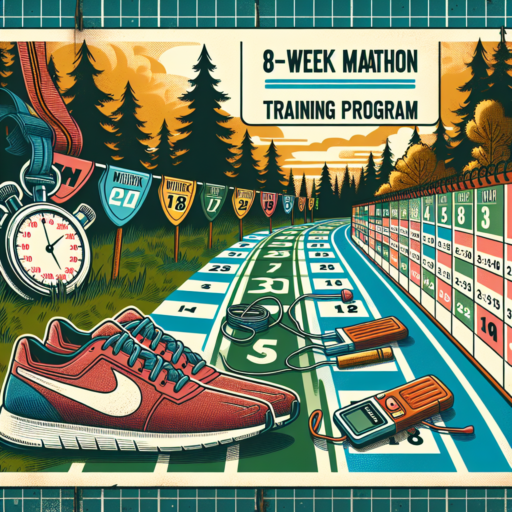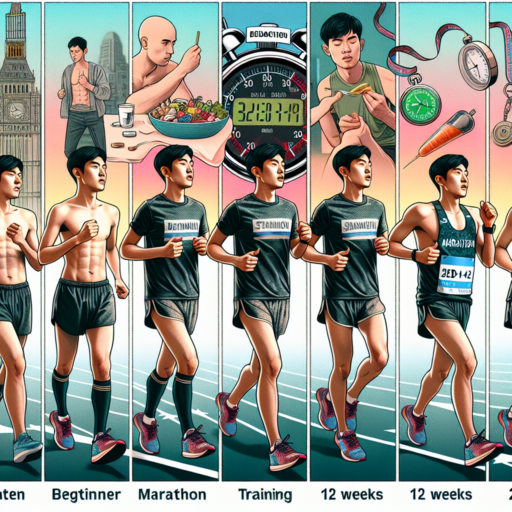Can you get marathon fit in 6 months?
Embarking on the journey to marathon fitness in a span of six months is a goal that intrigues many aspiring runners. It’s a question of commitment, appropriate training, and perhaps most crucially, the starting point of one’s physical condition. Six months is a timeframe that, with the right approach, can indeed transform a beginner or intermediate runner into marathon-ready shape.
First and foremost, a tailored training plan is essential. Such a plan typically encompasses gradual mileage increases, cross-training, and importantly, rest days to prevent injuries. A consistent, progressive training schedule that adapts as you improve is key to achieving marathon fitness within six months. Emphasizing the importance of recovery and nutrition cannot be understated either; both are pivotal components that support an effective training regimen.
Additionally, leveraging long runs and speed work into your training can significantly boost your marathon readiness. Long runs increase your endurance, while speed work, including intervals and tempo runs, enhances your running economy and threshold. It’s this combination of training variety and recovery that propels would-be marathoners towards their 26.2-mile goal in a half-year’s timeframe.
Can you go from couch to marathon in a year?
The question of whether you can transition from a couch lifestyle to completing a marathon within a year sparks a lot of interest and discussion within the running community. The simple answer is yes, but this transformation requires a dedicated plan, patience, and an understanding of one’s own body and limitations.
Developing a Structured Training Plan
Embarking on the journey from couch to marathon in 365 days necessitates a structured training plan tailored to your current fitness level. Initially, this plan might involve a mix of walking and running, gradually increasing the time spent running as your stamina and strength improve. Embracing a gradual approach helps in minimizing the risk of injury and burnout, which are common pitfalls for beginners. It’s crucial to include rest days, allowing your body to recover and adapt to the increased physical activity.
Nutrition and Hydration Strategies
Another vital aspect of preparing for a marathon within a year involves honing in on your nutrition and hydration. Consuming a balanced diet rich in carbohydrates, proteins, and healthy fats supports energy levels and recovery. Hydration, too, plays a significant role in your training regime, especially during long runs where your body loses substantial fluids. Incorporating these nutritional strategies can significantly enhance your overall performance and endurance, making the lofty goal of completing a marathon more attainable.
How many weeks should a marathon training plan be?
Embarking on a marathon is an inspiring adventure, and having the ideal training plan is crucial for crossing the finish line. When determining how many weeks should a marathon training plan be, consensus among experts suggests a plan that spans between 16 to 20 weeks. This timeframe offers a balanced schedule, allowing runners to incrementally increase their mileage while providing adequate time for recovery and injury prevention.
Starting with a 16-week plan is a common choice for beginners and intermediate runners. This period is sufficient to build up endurance gradually, focusing on slowly increasing the weekly mileage and incorporating one long run per week. It’s vital during these weeks to listen to your body and adjust the intensity and rest days accordingly.
For more experienced runners, extending the training plan to 18 or even 20 weeks can provide additional benefits. These extra weeks allow for more flexibility in incorporating speed work, tempo runs, and even more long runs, which are essential for improving performance. Moreover, it offers an opportunity to fine-tune race strategies and nutrition plans. However, it’s important to highlight that longer training schedules require careful monitoring to avoid overtraining, which can lead to injuries or burnout.
How to go from 5K to marathon?
Moving from a 5K run to a full marathon is a significant jump that demands careful planning, increased endurance, and a profound dedication to running. The transition involves not just increasing the distance gradually but also integrating essential elements like strength training, proper nutrition, and recovery strategies into your regimen. Here’s how to bridge the gap and prepare for the marathon challenge.
Increasing Your Distance Gradually
One of the key strategies in transitioning from a 5K to a marathon is to increase your running distance gradually. Following a well-structured training plan is vital, as it helps prevent injuries by allowing your body to adapt to the increasing demand. Start by adding a mile or two to your longest run each week, and every fourth week, reduce your mileage to facilitate recovery. This incremental approach helps build endurance efficiently.
Incorporating Strength Training and Cross-Training
Balancing your running with strength training and cross-training activities is crucial for injury prevention and performance improvement. Strength training enhances your muscle endurance, while cross-training activities like cycling or swimming can improve your overall cardiovascular health without the extra impact on your joints. Incorporating these activities 1-2 times a week can significantly aid in your marathon preparation.
Focusing on your goal to transition from a 5K to a marathon will require patience, persistence, and a strategic approach to training. By gradually increasing your running distance, adding diverse workouts to your routine, and paying attention to your body’s needs, you’re setting the foundation for a successful marathon finish. Remember, the journey from a 5K to a marathon is as much mental as it is physical; therefore, maintaining a positive mindset and being consistent with your training will be key determinants of your success.










